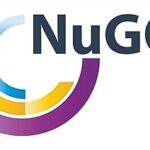Food Labelling Dataset 2021 Launched by QIB
Front and back of pack food nutrition labels are a crucial intervention to support healthy choices and reduce obesity rates by providing nutritional information to consumers in a way that’s easy to understand. Nutritional labelling can help to reduce dietary intakes of calories and nutrients, such as salt, saturated fat and sugar which, if over consumed, have been linked to chronic disease.
As indicated in the EU regulations (the provision of food information to consumers (Regulation (EU) No 1169/2011), most food companies have had to provide nutritional information on their pre-packed products since December 2016. This is not likely to change in the short term once details of the UK’s exit from the EU are finalised. The regulation presents a potential financial challenge for food companies to analyse their products in labs and, as an alternative, nutrient labels can also be produced by calculation using generally established and authoritative food composition data.
The McCance and Widdowson’s Composition of Foods Integrated Dataset (CoFID) dataset, which we maintain, contains reference data on the levels of nutrients in thousands of the most commonly eaten foods in the UK. However, this data contains some unknown nutrient values, occurring when analysis of a specific compound in a specific food has not been carried out. The absence of this data means that the calculation method for labelling becomes very difficult.
Therefore, following feedback from users, particularly SME’S and app producers, we have created a labelling dataset by estimating the missing values for the most important foods within CoFID. The values were estimated from a number of sources, such as manufacturers’ data, scientific literature, food composition datasets from other countries and calculations based on similar foods and ingredients. This new labelling dataset will help food manufacturers, dietitians, nutritionists, software and app producers create the nutrition information for food products and recipes.
The 2021 labelling dataset covers 2886 foods and ingredients from almonds and apples to yogurt and Yorkshire puddings, and is freely available to download using the button at the top of the page.
Overview of contents
- Nutrients in 2886 foods and ingredients relevant for labelling purposes; energy, fat, saturated fat, carbohydrate, sugars, starch, fibre, protein and salt.
- Nutrient values from the CoFID 2021 have been recalculated into the format required for labelling purposes (e. sodium converted to salt, protein calculated as nitrogen x 6.25 for every food, carbohydrate as the weight of the carbohydrates themselves and not their monosaccharide equivalents, energy calculated using the specified energy conversion factors, including for fibre).
- For foods that are deemed to be ingredients of recipes, such as flour, the unknown nutrient values were estimated on a case by case basis using reputable international data sources.
The 2021 dataset will make the use of the UK food composition dataset far easier for food labelling purposes.
Terms and Conditions labelling dataset download
This Food Labelling dataset is licensed under CC BY-NC-SA 4.0.
What this means:
- BY – You must give appropriate credit, provide a link to the license, and indicate if changes were made.
- NC – You may not use the material for commercial purposes.
- SA – If you remix, transform, or build upon the material, you must distribute your contributions under the same license.
Permitted uses:
- Academic and educational research
- Non-profit public health initiatives and research
- Government policy development and evaluation
- Non-commercial applications to improve public health outcomes
This license specifically does not permit any commercial use, including but not limited to:
- Licensing or sublicensing of derivative works for commercial purposes
Request for Special Permission:
If you require use of this dataset for any purpose not explicitly permitted by this license or stated here, please contact us at fn-nbri@quadram.ac.uk
Nutritional Information Solutions (NIS)
Nutritional Information Solutions provide a service to calculate the nutritional content of food products for the UK food industry (especially Small Medium Enterprises, SMEs),
Trading Standards Organisations and others in order to satisfy the needs of food producers who need reliable and accurate nutritional information for labelling their products as required by EU regulations
For further information please click here or to place an order, please contact us on nis@nis.quadram.ac.uk
NIS FAQ
What information do I need to provide?
We will need a list of all your ingredients, and how much of each. We will need to know your cooking method and also any weight losses involved, which means we know just how much water your product has lost during cooking or processing. If you throw away any of your product before packaging, for example scum or residue you will need to let us know the amount of that too. See the example template we provide on the web site. If you have any concerns please just email us at nis@nis.quadram.ac.uk
Do I need to provide any other information than just my recipe?
We will use our databases to find the nutritional composition of each of your ingredients before we calculate your product nutritional information, however in the very rare cases of you using an ingredient not included in our database we may get back to you to see if you can provide the details of your supplier so we can find the composition of that ingredient. If that is impossible chemical analysis may be necessary.
How accurate is the data?
The data is accurate and checked based on the ingredient information you give us. There is always some variation associated with food composition data but Trading Standards and DEFRA (Department for Environment Food & Rural Affairs) accept that data from McCance and Widdowson’s The Composition of Foods can legally be used for producing nutrition labels.
Who is your service for?
Anyone who requires nutrition information may use our service, including small and medium sized food producers and suppliers. We have developed the service to support small businesses.
Is my recipe safe with you?
Yes, absolutely, we promise to never share your recipe and ingredients with anyone else. Our terms and conditions include our confidentiality undertaking.
Can you provide other nutrient composition information?
Our service includes the seven compulsory nutrition elements and additional four voluntary nutrition label elements (starch, fibre, monounsaturates, polyunsaturates).
What nutrition information is required by the regulations?
You will need values for energy (kcal and kJ), fat, saturated fat, carbohydrate, sugars, protein and salt. We will provide you with this information with our calculation service.
Can I have access to the food composition database?
We use authoritative sources of composition data, including McCance and Widdowson’s The Composition of Foods. The McCance and Widdowson data can be downloaded free from the UK Government’s website. However, please note that we use many other databases and industry information to provide accurate data for your recipes. In order to calculate nutritional labels, carbohydrate, protein and energy values must be recalculated for labelling purposes and information on that can be found on p15-17 of the McCance and Widdowson User guide.
I produce milk and creams, do I need a nutritional calculation?
For milk it is possible to use the generic data for milks given in the dataset providing that you know you are producing ‘standard’ milk with fat contents close to the average. If you already have information on the specific fat content of your products you could use those values and use the generic values for other components. The carbohydrate, protein and energy values must be calculated slightly differently for labelling purposes and information on that can be found on p15-17 of the McCance and Widdowson User guide.
Is there any difference in nutrition labelling for organic and non-organic produce?
In our McCance and Widdowson dataset there is no distinction made between organic and non-organic foods.
I produce dried herbs and spices, do I need to provide nutrition information?
There are exemptions from the declaration which include: ‘A herb, a spice or mixtures thereof’ and also ‘unprocessed products that comprise a single ingredient or category of ingredients’. Please contact us and we can help with your declaration.
What if I produce a food stuff that is used as an ingredient in a recipe within the home?
It is possible to calculate your nutritional information based on the product itself and also the product as it would be included when made into a recipe. The regulations state that ‘Where appropriate, the information may, in addition and/or instead and where appropriate, relate to the food after preparation, under the condition that:
a) Sufficiently detailed preparation instructions are given b) The information relates to the food as prepared for consumption.
What if calculation is not possible?
It is possible that your ingredients and preparation methods mean that nutrient content based on calculation from ingredients is not appropriate and then direct laboratory analysis would be necessary. In the unlikely event we can’t calculate your nutritional information, we will inform you and advise you accordingly.
Can you help me with allergen information?
Currently our service is for nutrition labelling only. There is a guide downloadable from the Food Standards Agency website which will help you with allergen information required.
Can you help me with health claims and portion sizes?
No, sorry, currently our service is for nutrition labelling only







